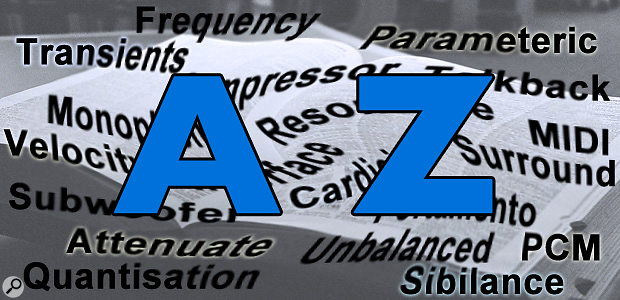You are here
Glossary
A 2-wire electrical signal connection where the signal conductor is surrounded by a screen which provides a 0V reference and also guards against electrical interference.
To play the same melody using two or more different instruments or voices.
A condition where the output signal is the same amplitude as the input signal; the overall system gain is then x1 or unity.
Universal Serial Bus. A computer interface standard introduced in 1996 to replace the previous standard serial and parallel ports more commonly used. The USB1.1 interface operated at up to 12Mb/s, but this was superseded in 2000 by USB2.0 which operates at up to 480Mb/s. Most USB interfaces can also provide a 5V power supply to connected devices. USB3.0 was launched in 2008 and is claimed to operate at rates up to 5Gb/s.
USB connectors can be indentified by having a blue insert in the Type-A sockets and the letters SS (SuperSpeed). The latest edition, USB3.1 (launched in 2013) offers transfer rates of 10Gb/s, approaching that of the first generation of Thunderbolt interfaces. Like earlier USB interfaces, the USB3 format provides a 5V power supply, but the current rating has been increased from USB2.0's 200mA (1.0 Watts) to 900mA (4.5 Watts), and sockets designated as charging sockets can manage 1500mA (7.5 Watts).
The latest (2014) incarnation of a Universal Serial Bus interface, carrying bidirectional data at speeds of 10Gb/s. USB-C is not compatible with previous generations (USB 1.1, 2.0, 3.0, 3.1) as it has a very different 24-pin connector which is symmetrical and employed at both ends of a free cable, and all devices have the same socket. Power is optionally available over USB-C connections at 5V with a current capacity of either 1.5A (7.5W) or 3A (15W).

